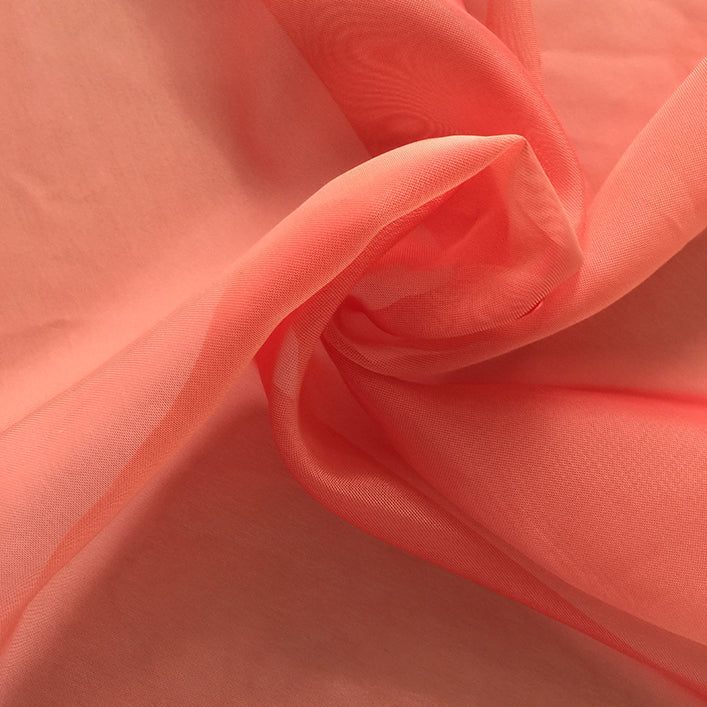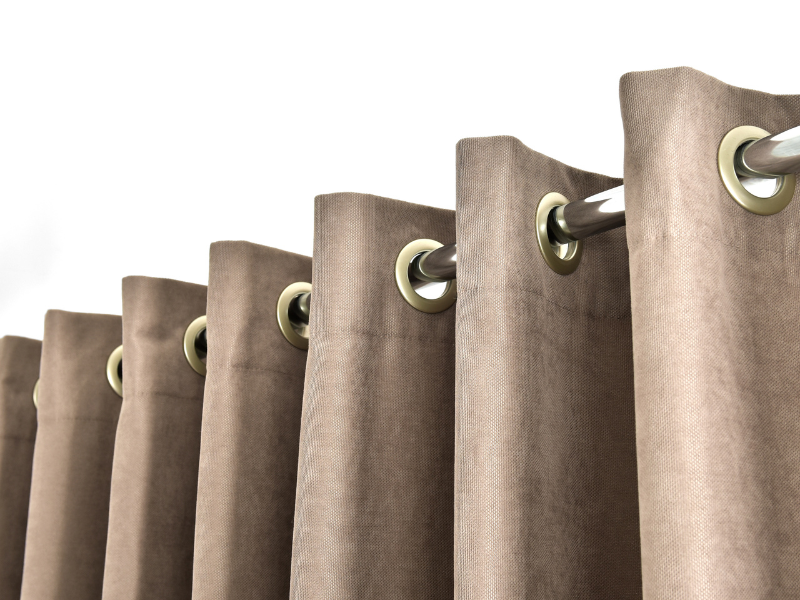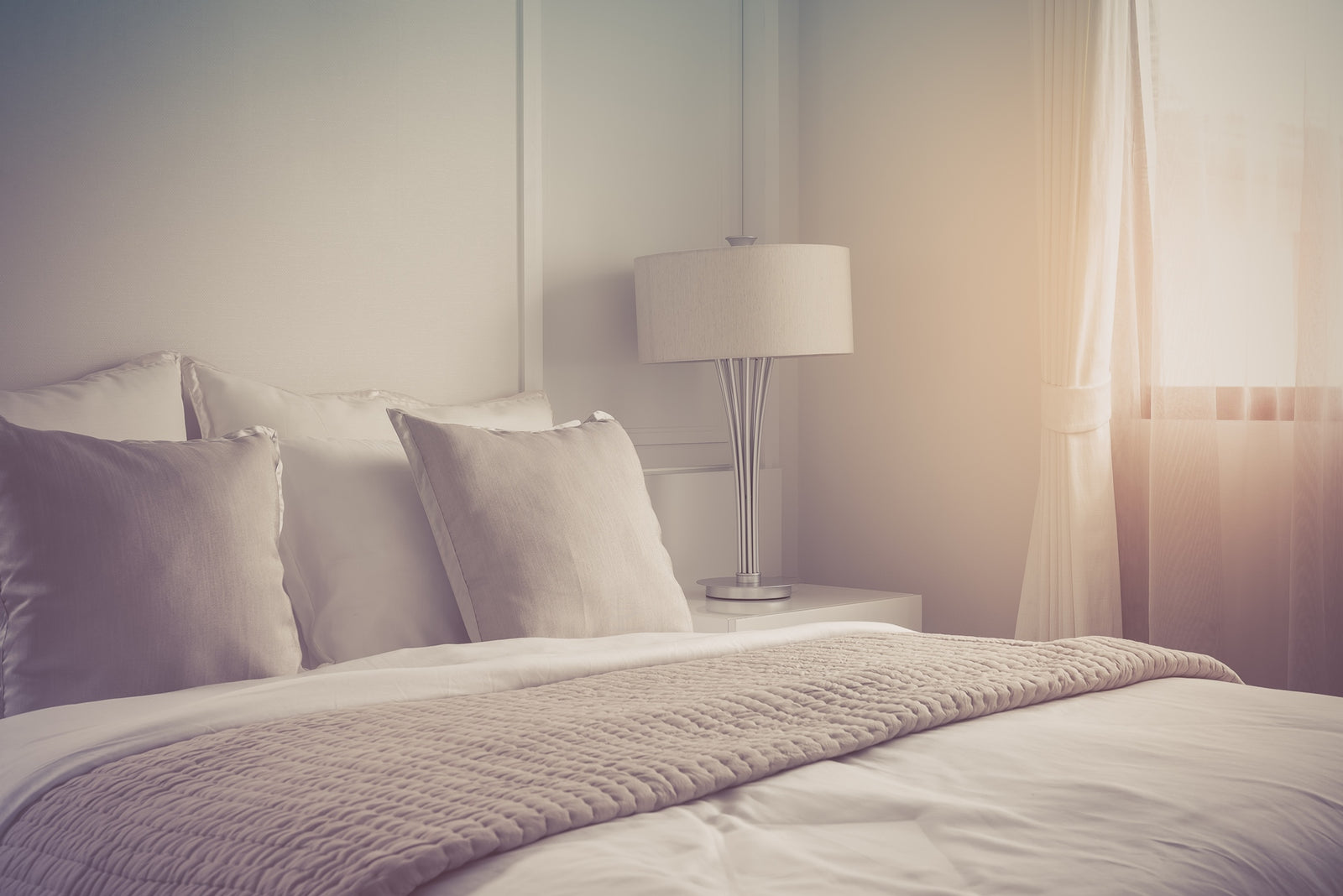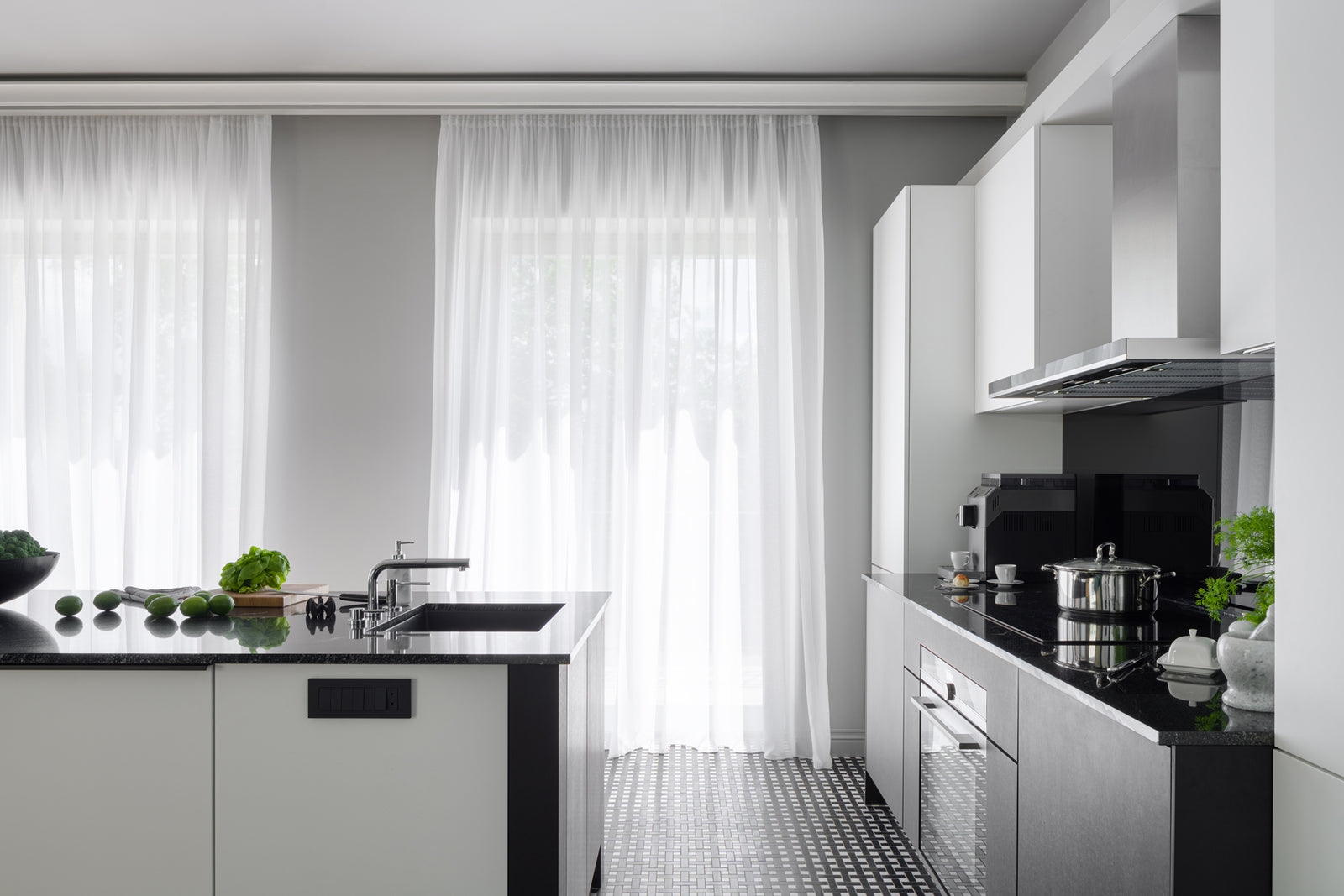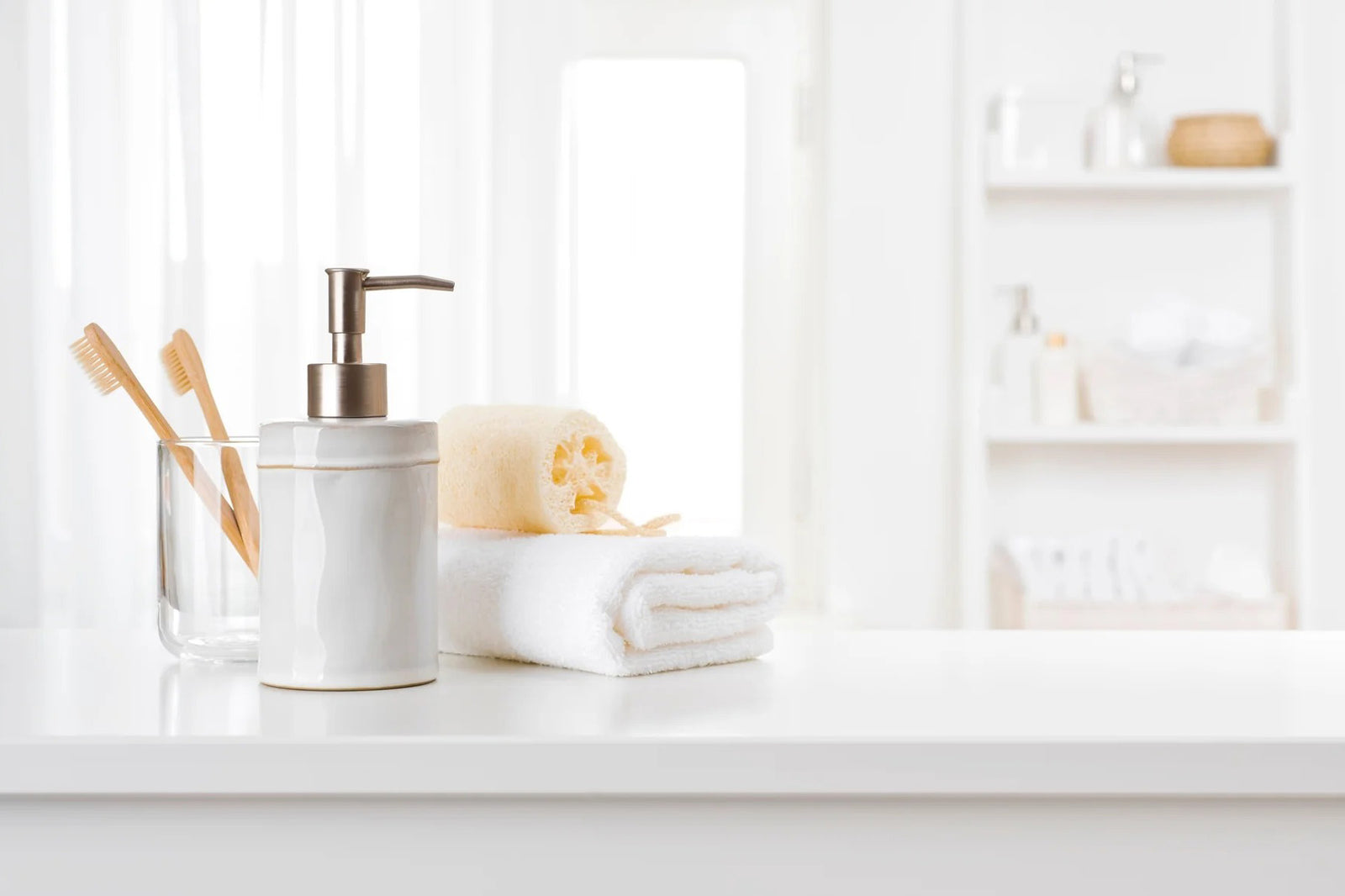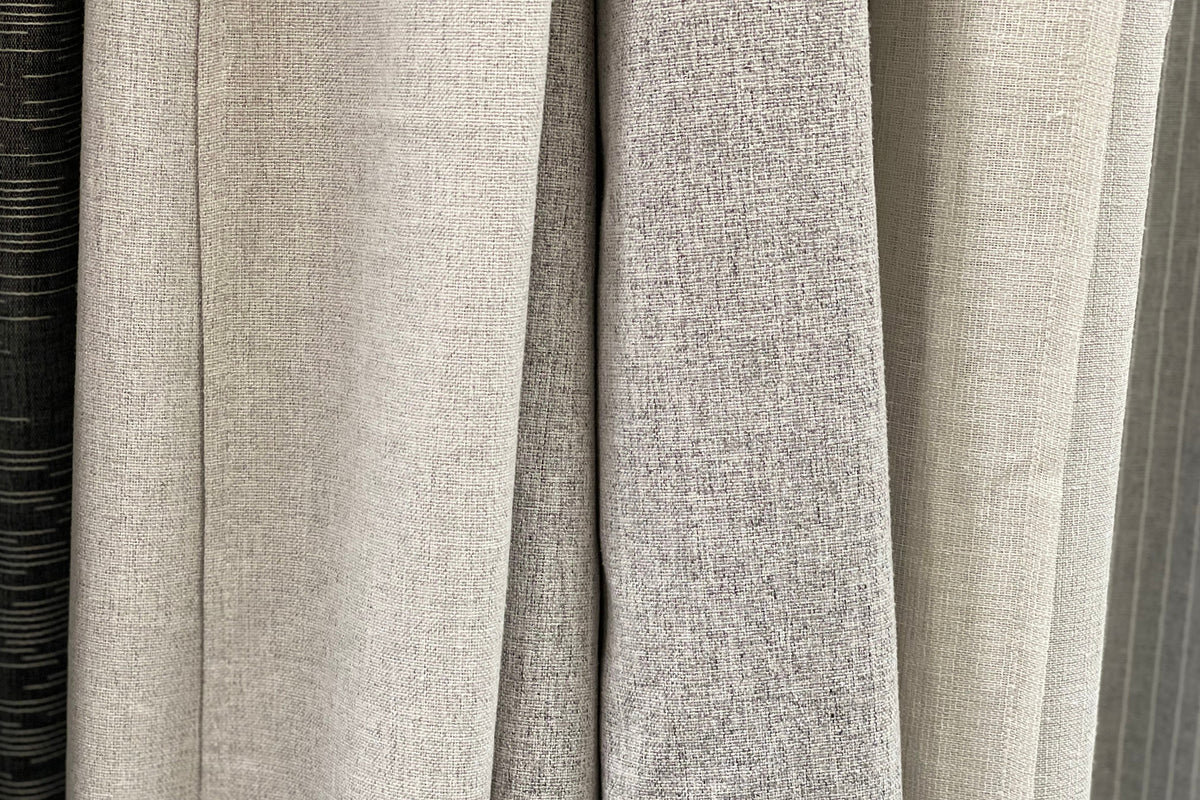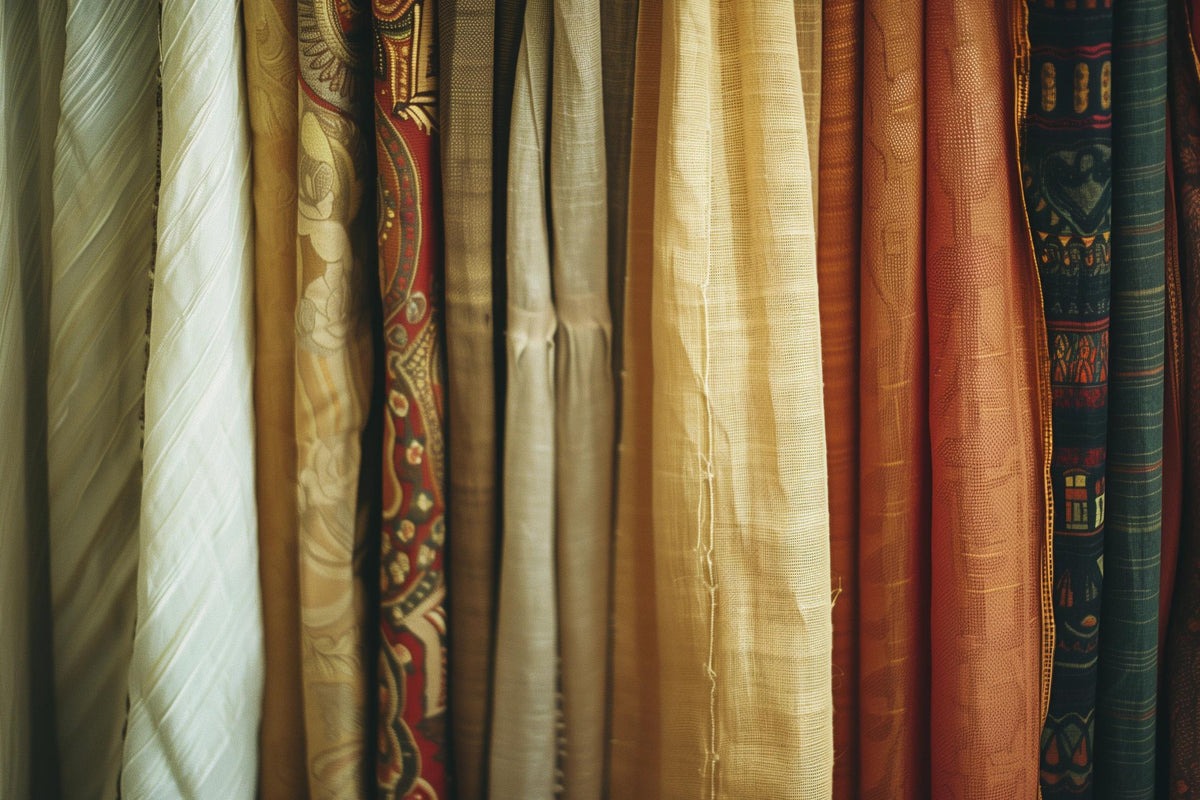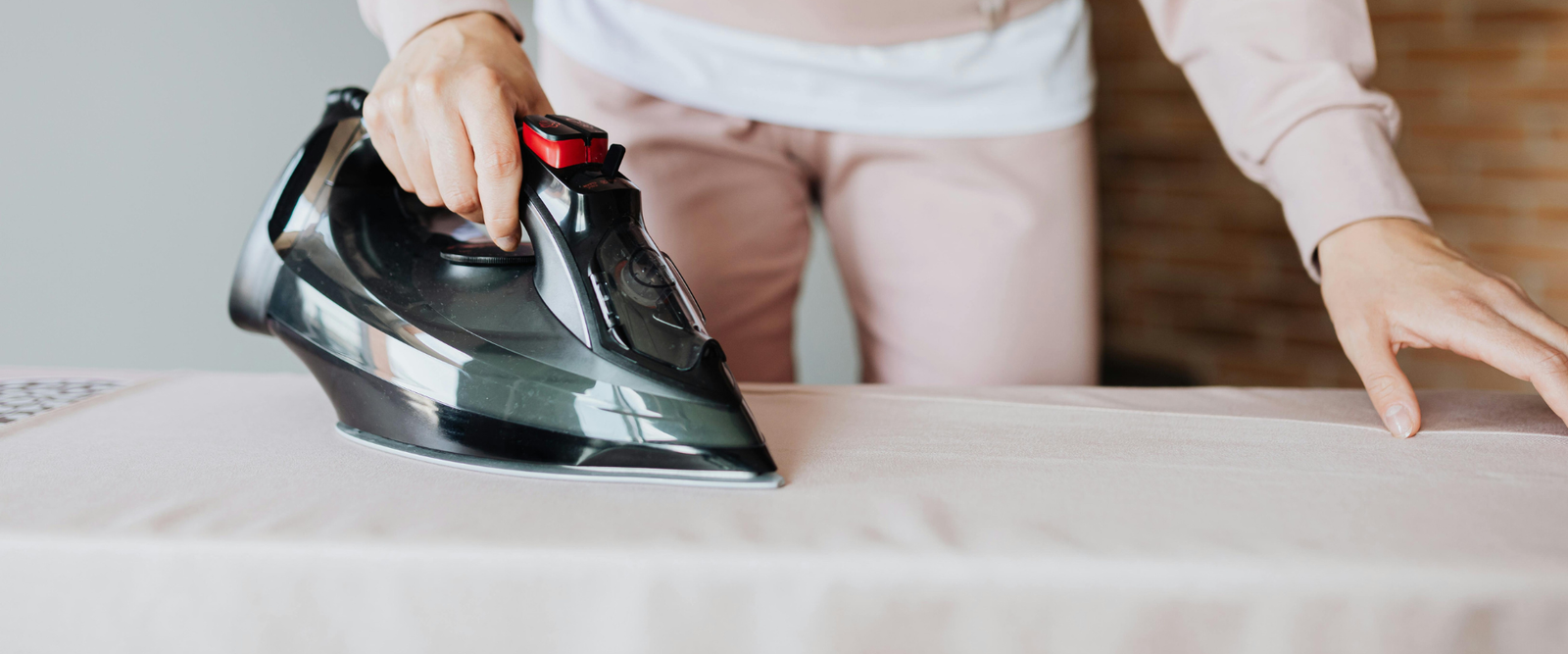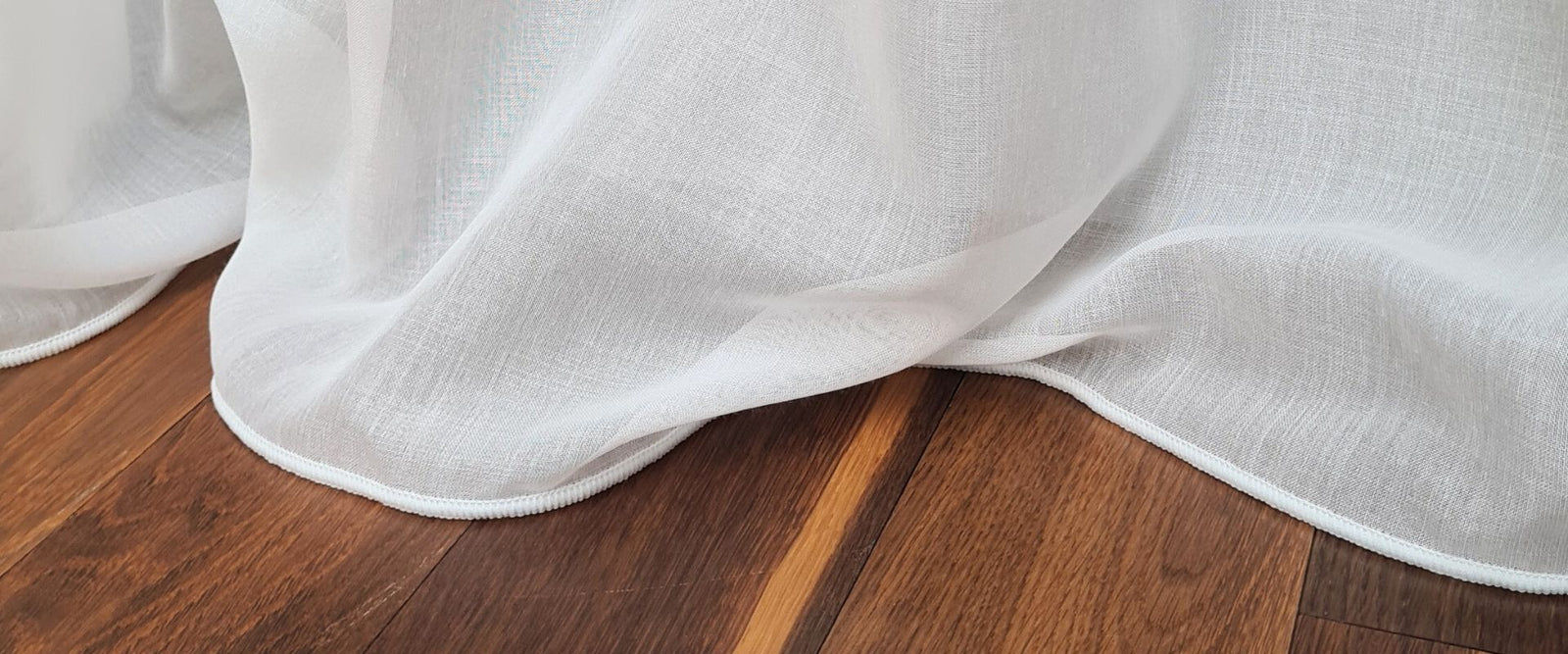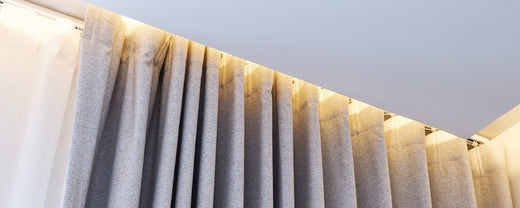
Whether it's a cozy living room or an elegant dining room – the choice of curtains makes all the difference! But have you ever thought about the pleats? Because pleats not only influence the look and effect of the curtains, but also how much light enters the room.
In this blog post, we'll tell you about the different types of curtain pleats and how to best showcase your curtains. You'll also learn everything you need to know to calculate the correct amount of fabric.
Different types of folds and why they are so popular
The pleat style of a curtain defines how the fabric is gathered or sewn at the top. Its purpose is purely aesthetic; it creates the illusion of fullness. Throughout history, the goal in both interior design and fashion has been to achieve an opulent and luxurious look. In many cultures, pleats were traditionally reserved for nobility or ceremonial occasions. However, pleats have been popular since antiquity, hence the vast number of variations. The versatility of these designs allows curtains to be individually tailored to different interior design styles and personal preferences. Depending on the style, pleats can appear elegant, modern, simple, or opulent – and this is precisely what makes them so versatile.
An overview of the 7 most popular curtain pleat types
The type of pleat is an important factor that significantly influences the overall effect of a room. Whether you prefer a cozy atmosphere or a modern, minimalist look – below we'll show you the seven most popular curtain pleat styles and explain how they can be used to their best advantage in your home.
Gathered pleats:

- This type of curtain pleat is probably the most flexible and frequently used. The fabric is gathered evenly using a gathering tape. This technique is particularly suitable if you're looking for a simple yet elegant solution. Gathered pleats suit almost any interior design style and are easy to use. Another advantage: they can be easily attached to both curtain rods and tracks.
Classic pencil folds:

- Pencil pleats, often referred to as the "classic pleat," consist of closely spaced, regular pleats that give the curtain a traditional and timeless look. These pleats are ideal for living rooms and other formal spaces. They are particularly advantageous if you desire balanced light distribution and a harmonious aesthetic.
Slight wavy wrinkles:

- Ripplefold pleats, also known as wave pleats, create soft, flowing waves that look particularly good in modern and minimalist interiors. This type of pleat is ideal if you want a curtain that looks good even when open. However, they require special track systems to maintain their shape.
Modern eyelet pleats:

- Eyelet pleats involve threading the curtain fabric through metal eyelets attached to the top edge of the curtain. This creates deep, even pleats and a modern, uncluttered look. This type of pleat is particularly suitable for heavy fabrics such as velvet or linen and complements contemporary interior design styles.
More formal box pleats (inverted pleats):

- Box pleats, also known as "reverse pleats," are deep folds that fall backward, giving the curtain a very structured and formal look. This type of pleat is perfect for rooms where you want to achieve a clean and elegant look.
Elegant French pleats (squeeze pleats):

- The French pleat, also known as a box pleat, exudes elegance and opulence. This type of pleat is frequently used with heavy fabrics such as velvet or silk and creates a luxurious look that is ideal for formal spaces like the living room or dining room.
Swiss pleats:

- And last but not least: the traditional Swiss round pleat – a Swiss classic characterized by hand-formed, round pleats that give the curtain a particularly elegant and robust structure. This type of pleat is especially popular for custom-made curtains and is therefore suitable for almost all curtain types. Learn all about our diverse range of custom-made curtains here.
Note: By default, we manufacture curtains with a special Swiss pleat, equipped with sewn-in click gliders. If you would like a different pleat style, simply let us know – we will be happy to provide you with a customized quote.

How to pleat curtains: perfectly shaped pleats in just 5 steps
The art of creating flawlessly beautiful curtain pleats begins with careful preparation. This may seem a little tricky at first, depending on the style, but with a few simple steps, you too can create perfect pleats in no time.

Here's our little how-to guide on pleating curtains:
Step 1: Calculate fabric requirements, pleat factor & curtain width:
Before you can even begin pleating your curtains, it's essential to calculate the required fabric width. The right amount of fabric, as well as answering the question "How wide should my curtains ultimately be?", is crucial to ensure your curtains fit perfectly. However, the amount of fabric needed varies considerably depending on the chosen pleating style. An important factor and helpful tool for precisely determining the correct amount of fabric is the so-called "pleat factor." This indicates how much more fabric you need compared to the width of your window.
Therefore, here is a brief overview to make the calculation easier for you:
- Pencil folds = between 2.5 and 3 times the window width.
- Gathered pleats = approximately 2.5 times the window width.
- Eyelet pleats = usually 1.5 to 2 times the window width.
- Loops = approximately 1.5 times the window width.
- Box folds = between 2 and 2.5 times the window width.
- Wavy folds = often also require 1.5 to 2 times the window width.
EXAMPLE 1:
If your window is 2 meters wide and you want to make curtains with pencil pleats, you should multiply your window width by a pleat factor of 2.5 to 3. This means you will need between 5 and 6 meters of fabric to ensure the curtains have the desired drape and look perfect.
Step 1 – Special case: Wrinkle factor with patterned & thick fabrics:
But it's not just the type of pleats that influences the amount of fabric needed – the pattern and fabric quality also play a crucial role. Patterned fabrics often require a larger amount of fabric so that the motifs lie evenly and are clearly visible in the pleats.
- For patterned fabrics, you should therefore expect a pleat factor of about 2.5.
- Furthermore, thicker fabrics tend to wrinkle wider, which is why you should plan for a higher wrinkle factor of 2.5 to 3 with such materials.
EXAMPLE 2:
If you choose a patterned, thick fabric for curtains with wave pleats and your window is 2 meters wide, a pleat factor of 2 is recommended. This means you will need 4 meters of fabric so that the pattern appears even and the waves fall softly and harmoniously.
Once you have determined the pleat factor, you can calculate the actual amount of fabric and curtain width required. Use the following formula:
Fold factor × (window width + fabric allowance) = curtain width
Step 2: Distribute the pleats harmoniously using gathering tape, pleating hooks, etc.
Once you've calculated the amount of fabric needed and selected the right fabric, the next step is to evenly distribute the pleats. For curtain pleats like pencil pleats or gathered pleats, it's important to distribute the pleats uniformly to create a harmonious overall look.
- Option 1 - Curling tape:
For many, the gathering tape is the key to creating harmonious pleats. Attach it to the top edge of the curtain and then pull the drawstrings until the ideal pleat depth is achieved, distributing the pleats across the entire width of the curtain. - Variant 2 - pleat hooks:
Use pleating hooks that are inserted into the pre-made pockets of the curtain. These hooks ensure uniform pleats, especially for curtains with deep box or pencil pleats. - Variant 3 - pleated rolls:
Insert pleating rollers into the curtain loops to distribute the pleats symmetrically along a track. This method is particularly suitable for wave pleats, as they create a very flowing look.
Step 3: Secure the wrinkles
To ensure the pleats retain their shape, you should secure them. For pleats made with eyelets, the eyelets themselves do this, while for pleats made with gathered tape, you can secure the pleats with curtain rings.
- Pull the folds apart evenly and secure them carefully so that they fall symmetrically and no gaps are left.
Step 4: Final inspection
Before you finally hang up your freshly folded curtains, it would be advisable to check the folds one more time.
- Correct any irregularities and make sure that all folds fall evenly.
Step 5: Hang the curtains
Depending on the chosen curtain accessories , such as curtain rods or tracks, the effect of the pleats can change. In our blog article " Types of Curtain Hanging Systems," we present the various hanging methods in detail.
- Now carefully hang up the curtain and, just to be safe, check once more that the folds are perfect and that your curtain really looks its best.
CONCLUSION: How to find the perfect pleat style for your curtains
Choosing the ideal pleat style allows you to create the perfect look for your curtains. Whether modern, classic, or opulent – the variety and flexibility of curtain pleat styles enables you to design each room individually.
And if you're still unsure about taking measurements and would prefer professional support, we offer completely free in-home consultations throughout Switzerland. Our experienced consultants will advise you directly at your home and help you design your curtains to be perfectly measured and stylish.
HERE IS INFORMATION ABOUT OUR SWITZERLAND-WIDE HOME CONSULTATION


